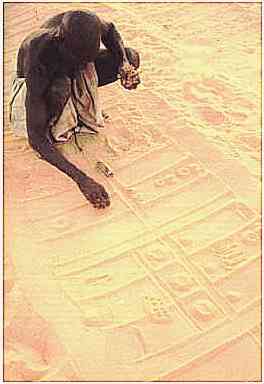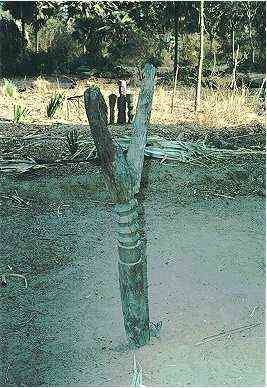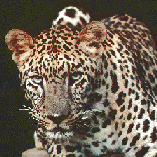 |
THE SANGOMA TRADITION OF SOUTHERN AFRICA
Wim van Binsbergen

|
THE SANGOMA TRADITION OF SOUTHERN AFRICA Wim van Binsbergen |
 |
| Important
notice: List of publications Wim
van Binsbergen Over the years, the Shikanda portal (of which the present page on African religion has attracted the largest number of visitors) has grown to such size, and its internal structure has become so complex, that visitors have had increasing difficulty finding their way, even despite the internal search facility which appears on all the index pages of the various constituent websites. Since Wim van Binsbergen's main output consists of texts for publication, an updated list of publications with hyperlinks to all available fulltext digital texts seems the best remedy. Thanks to the good services of the African Studies Centre, Leiden, in the course of current retrodigitalisation of its members published work, many more digital texts have recently come available, so that now the list of publications could be greatly improved and given a more prominent place in the Shikanda portal. This list is now being provided with clickable links to these uploaded publications. Since that time-consuming process has not yet been completed, of many articles listed, fulltext or draft versions are in fact available in the Shikanda portal, even though no links yet appear in the list of publications. Therefore, please also look at the separate webpages within the Shikanda portal, and use the internal search facility (see below). |
In addition to his scholarly and literary work, Wim van Binsbergen has been, since 1990, a certified spirit medium/ diviner/ priest in the sangoma tradition of Southern Africa. This page sets out the background, accesses Wim van Binsbergen's credentials as a sangoma, and enables you to initiate a private consultation with him
 |
proceed to the Shikanda portal in order to access all other websites by Wim van Binsbergen: general (intercultural philosophy, African Studies); ethnicity-identity-politics; Afrocentricity and the Black Athena debate; Ancient Models of Thought in Africa, the Ancient Near East, and prehistory; sangoma consultation; literary work |
| also a highly sensitive in-site search facility is now available at the overall Shikanda.net portal homepage, covering all Wim van Binsbergen's sites in a single search action |
WHAT IS SANGOMA?
Sangoma is the term for a diviner-priest in the tradition of the
Nguni-speaking peoples (Zulu, Xhosa,
Ndebele, Swazi) of Southern Africa. In the
course of the twentieth century of the North Atlantic era this
idiom of diagnosis and healing has increasingly spread over the
entire Southern African subcontinent. The sangoma's powers are
based on the fact that she/he is the incarnation of an ancestral
spirit. Usually this spirit makes his presence known by
inflicting on the host a serious disease which cannot be cured by
cosmopolitan medicine. Diagnosis of such possession is the first
step on a path which, for a minority of the patients, leads to a
status of apprenticeship and incubation called utwaza. The real
proof of election for sangoma-hood is when the spirit speaks
through the patient's mouth when in trance, preferably in tongues
or dialects unknown to the patient in ordinary life, and when it
divulges messages to the living concerning ancestral election,
imminent illness and death, and the breach of taboos. The
majority of twazas graduate as fully-fledged sangomas by means of
a public, festive and expensive celebration, which culminates in
the ritual sacrifice of at least one goat (another was already
sacrificed at the onset of utwaza) and the ceremonial consumption
-- with the aid of make-shift chopsticks -- of the sacrificial
animal's intestines. Being symbolically an unborn foetus herself,
the twaza is not supposed to eat any 'inside' meat, and is also
otherwise an unborn child.
Sangomahood is spread in the typical fashion of cults of
affliction, i.e. through a chain reaction: each twaza who has
graduated to become a sangoma has the right to diagnose and treat
patients and to supervise them through utwaza and graduation. The
cult is loosely organised in local lodges, headed by a senior
sangoma. Often an extended family forms the core of a lodge, but
every lodge comprises non-kin among its members, typically
recruited from among a great variety of ethnic groups,
nationalities, and language groups. In north-eastern Botswana and
the adjacent regions of South Africa and Zimbabwe, sangoma lodges
are associated with the Mwali cult, to whose headquarters in the
Matopos Hills (Zimbabwe) a portion of their income from
divination and healing is forwarded as tribute. Mwali is the name
of the High God venerated in a large part of the Southern African
subcontinent.
Being relatively scarce (e.g. in Francistown c. 1990, fewer than
one in every 1000 inhabitants was a sangoma), sangomas are
considered to offer a public service. They may be approached in
public places -- where they are conspicuous by their bracelets
and necklaces of white, red and black beads -- or in their homes
and lodges. Sometimes they honour local and state festivals with
their presence and ceremonial dancing. Clients may consult
sangomas for physical complaints, psychosomatic and psychic
problems, and for problems of a social rather than
individual/physical nature, such as bad luck in business and
amorous affairs, conflict and competition, bereavement in the
family, major travelling etc. In their secluded ritual activities
-- which centre on singing, dancing and drumming in gaudy
uniforms -- mediumistic trance plays a central role. Yet usually
the diagnosis and treatment of lay patients does not involve
trance on the part of the sangoma herself. Here the sangomas use
of combination of herbalism -- based on a considerable knowledge
of the Southern African natural environment -- and divination
with four tablets of wood, ivory or bone. These 10 cm long flat
tablets (Hakata, Dithlao) are cast onto the ground, and since
they are marked to be distinguished from each other and to tell
front from back, they can take 2 to the power 4 = 16 different
positions. These positions are named, interpreted according to
several dimensions (ancestors; sorcery and witchcraft; the body;
relations between living kin; wealth; travelling, etc.), using a
detailed interpretative catalogue whose antecedents ramify into
the Indian Ocean cultures, West Africa, Arabian ilm al-raml, and
ultimately the Chinese I Ching.
sangoma
power
The strength of sangomahood as an idiom of diagnosis and healing
derives from a combination of:
CREDENTIALS
| CONSULTING A SANGOMA | |
| As a traditional healer in Botswana, Wim van Binsbergen is locally known as Johannes Sibanda -- Johannes as the incarnation of MmaShakayile's cousin who died in the 1970s, and Sibanda as the name of Wim van Binsbergen's divined adoptive totem. Sibanda is any clawed predator, but especially the porcupine, which features in his logo. The colours black, white and red are the sacred colours of sangomahood, of the Mwali cult, and of African religion in general. |
The Shikanda domain is a goldmine of resources on sangomahood:
This search facility provides a complete electronic index of the papers on sangomahood in the present website and all of Wim van Binsbergen's other websites in the Shikanda domain, and moreover enables you to search the entire Internet quickly and effectively; simply enter the word(s) you require into the blank search box, and press 'Search'
NEW / NIEUW:
|
|||||
Moreover, the Shikanda domain provides the following popular or scholarly resources on sangomahood:
get Acrobat Reader
 |
proceed to the Shikanda portal in order to access all other websites by Wim van Binsbergen: general (intercultural philosophy, African Studies); ethnicity-identity-politics; Afrocentricity and the Black Athena debate; Ancient Models of Thought in Africa, the Ancient Near East, and prehistory; sangoma consultation; literary work |
| also a highly sensitive in-site search facility is now available at the overall Shikanda.net portal homepage, covering all Wim van Binsbergen's sites in a single search action |
| page last modified: 25-01-07 15:16:57 |  |
|||
 |